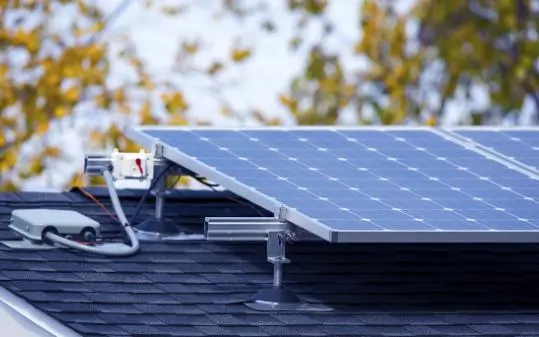Harnessing Nature’s Power: A Guide to Free Electricity Solutions

Introduction: Unlocking the Potential of Free Electricity
In an era marked by environmental concerns and a growing desire for sustainable living, the quest for harnessing nature’s power to generate Free Electricity has gained momentum. This article explores various innovative solutions that tap into renewable resources, offering a comprehensive guide to embracing a greener and more cost-effective approach to energy production.
I. The Rise of Renewable Energy
The Evolution of Energy Sources
Over the years, humanity has relied heavily on finite and environmentally taxing energy sources, such as fossil fuels. However, a paradigm shift is underway, with renewable energy sources taking center stage. Solar, wind, hydro, and geothermal energy are emerging as formidable contenders in the quest for free electricity.
1. Solar Power: Capturing the Sun’s Energy
Solar power is at the forefront of the renewable energy revolution. Photovoltaic cells convert sunlight into electricity, providing an abundant and sustainable source of power. Advances in solar technology, coupled with decreasing costs, have made harnessing the sun’s energy more accessible than ever.
2. Wind Energy: Riding the Wind for Power
Wind turbines harness the kinetic energy of the wind, transforming it into electricity. With towering wind farms becoming a common sight, wind energy has proven to be a reliable and scalable solution for generating free electricity. Innovations in turbine design continue to improve efficiency and output.
3. Hydropower: Tapping into Flowing Waters
Hydropower, generated by the movement of water, has been a longstanding source of electricity. Dams and turbines convert the energy from flowing rivers into electrical power. While large-scale hydropower plants exist, smaller-scale solutions, such as micro-hydro systems, offer localized options for communities.
4. Geothermal Energy: Tapping Earth’s Inner Heat
Beneath the Earth’s surface lies a potent source of heat waiting to be harnessed. Geothermal energy taps into this natural reservoir, utilizing the Earth’s internal heat to produce electricity. Geothermal power plants and direct-use applications make this a reliable and continuous source of free energy.
II. Residential Solutions: Powering Homes with Nature
1. Solar Panels for Homes: A Rooftop Revolution
The installation of solar panels on residential rooftops has become increasingly popular. Homeowners can generate their electricity, reducing reliance on the grid and lowering utility bills. Advances in energy storage technology also allow for the accumulation of surplus energy during peak sunlight hours for use during the night or cloudy days.
2. Small Wind Turbines: Wind Power for the Home
For those in windy regions, small-scale wind turbines designed for residential use offer an alternative to traditional electricity sources. These compact turbines can be installed in yards or on rooftops, providing homeowners with a steady source of Free Electricity.
3. Micro-Hydro Systems: Harnessing Local Water Resources
In areas with access to flowing water, micro-hydro systems present a viable solution for decentralized energy production. These systems can be installed in small rivers or streams, providing a reliable and continuous source of electricity for homes and communities.
4. Geothermal Heat Pumps: Efficient Heating and Cooling
Beyond electricity generation, geothermal heat pumps offer an energy-efficient solution for heating and cooling homes. By leveraging the stable temperature of the Earth below the surface, these systems provide a sustainable alternative to traditional HVAC systems.
III. Overcoming Challenges: Integration and Storage
1. Smart Grids: Enhancing Energy Distribution
As the reliance on renewable energy grows, the need for smart grids becomes paramount. Smart grids enable efficient distribution of electricity, balancing the intermittent nature of renewable sources. By incorporating advanced monitoring and control systems, these grids optimize energy flow, reduce wastage, and enhance overall reliability.
2. Energy Storage: Addressing Intermittency
One of the challenges with renewable energy sources is their intermittency. Energy storage solutions, such as advanced batteries, play a crucial role in storing excess energy generated during peak times for use during low-production periods. Ongoing advancements in battery technology are making energy storage more efficient and cost-effective.
IV. Government Incentives and Policies: Driving the Transition
1. Subsidies for Renewable Energy
Governments around the world are recognizing the importance of transitioning to renewable energy. Various subsidies and incentives are being offered to individuals and businesses investing in solar, wind, and other renewable technologies. These financial benefits help offset the initial costs of installation, making clean energy more accessible.
2. Net Metering: Empowering Energy Producers
Net metering policies allow individuals and businesses with renewable energy systems to feed surplus electricity back into the grid. In return, they receive credits or compensation from utility companies. This not only encourages the adoption of renewable energy but also enables a more dynamic and decentralized energy grid.
V. The Future of Free Electricity: Innovations on the Horizon
1. Emerging Technologies: From Wave Energy to Tidal Power
Beyond the current mainstream renewable sources, ongoing research is uncovering new possibilities. Wave and tidal energy, for example, harness the power of ocean movements to generate electricity. These technologies are still in the experimental stages but hold great promise for expanding the repertoire of free electricity solutions.
2. The Role of Artificial Intelligence in Energy Management
Artificial intelligence (AI) is becoming increasingly integrated into energy management systems. AI algorithms can predict energy demand, optimize energy production from renewable sources, and enhance the overall efficiency of the power grid. As technology continues to advance, the synergy between AI and renewable energy may redefine the landscape of free electricity.
Conclusion: A Greener Tomorrow Starts Today
Harnessing nature’s power for free electricity is not merely a futuristic dream; it is a tangible and pressing need. The evolution of renewable energy technologies, coupled with supportive government policies, has paved the way for individuals and communities to embrace sustainable energy solutions. By adopting these technologies and incorporating them into our homes and infrastructure, we not only reduce our carbon footprint but also contribute to a more resilient and decentralized energy landscape. As we look to the future, the journey towards free electricity is not just about meeting our energy needs but about forging a sustainable path for generations to come.




